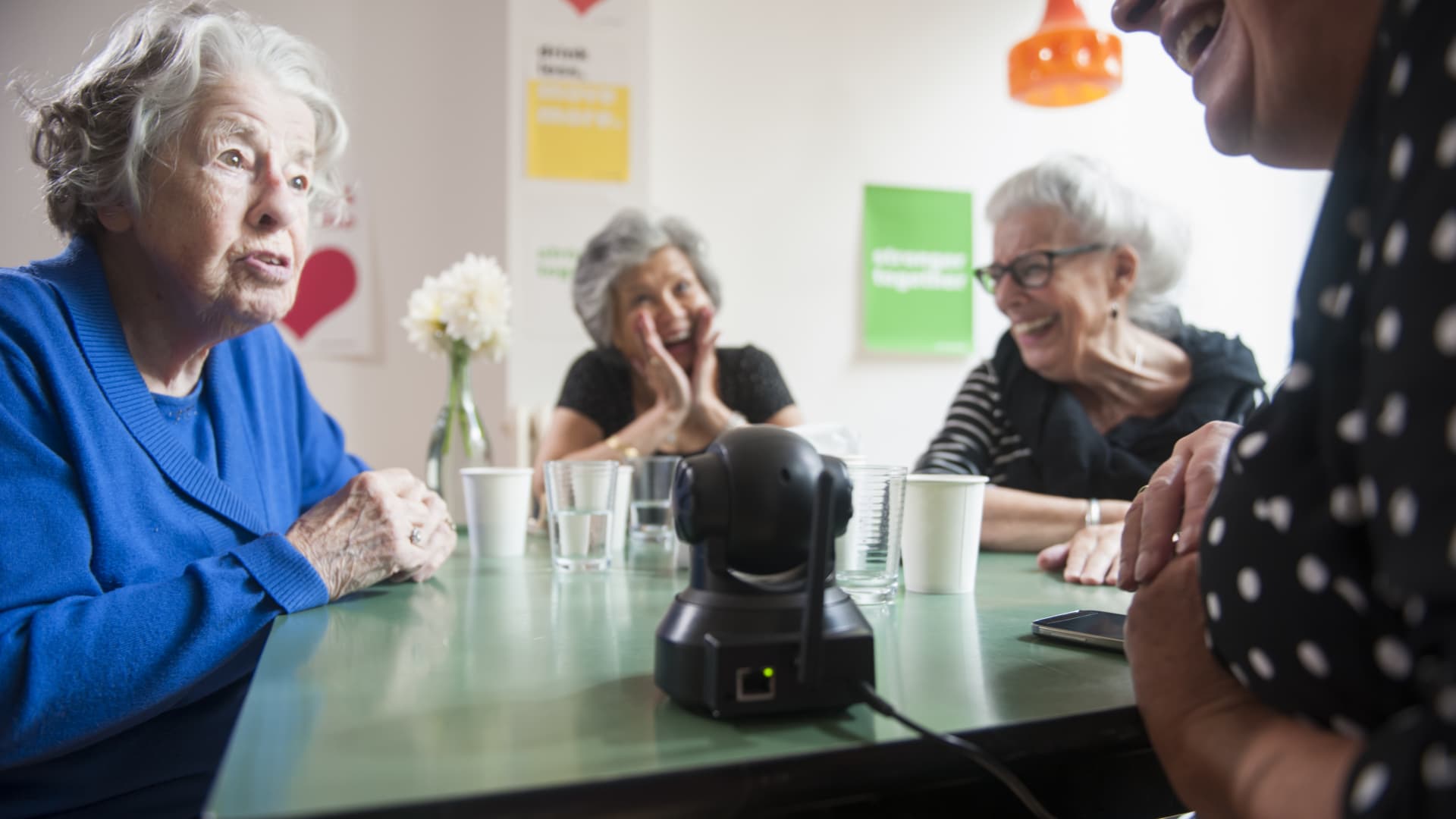Products You May Like
Despite a sizeable elderly and disabled population in the U.S., there is not enough affordable housing to accommodate those individuals.
“For millions of Americans, adequate housing is more of an aspiration than a reality,” said Sen. Bob Casey, D-Pa., who serves as chairman of the Senate Special Committee on Aging, at a Thursday hearing.
“In particular, too many older adults and people with disabilities cannot afford accessible housing,” Casey said.
About 26% of the U.S. population — or about 61 million people — have a disability, Casey said. At the same time, 1 in 5 Americans will be older than 65 by 2030.
Accessible homes — which offer specific features or technologies — can help older and disabled individuals continue to live in their own homes or in communities they choose. That may include wider doorways, lower counters and sinks and accessible bathrooms.
Yet less than 5% of the national housing supply is accessible, Casey said. Moreover, less than 1% of housing is available to wheelchairs.
More from Personal Finance:
Is raising taxes the answer to Social Security reform?
Medicare Part B premiums may increase due to Alzheimer’s med
Social Security phone disruptions have led to longer wait times
Leaders on both sides of the political aisle agree the shortage of adequate housing is a problem.
The U.S. is between 3 million and 6 million houses short of what the market needs, noted Sen. Mike Braun, R-Ind., ranking member of the Senate aging committee.
The problem has been complicated by state and federal regulatory burdens, higher infrastructure costs, supply chain constraints, work force shortages and increased materials costs due to inflation, Braun noted.
“Sometimes we’re at odds in terms of what we should do, but there’s always practical legislation in the middle, and I’d hope that we can have those conversations that get us there,” Braun said.
Suggestions for improvements emerged during Thursday’s hearing.
Develop affordable, accessible housing
For Dominique Howell, a disability housing advocate based in Philadelphia, finding an adequate place to call home that can accommodate her disability has been a struggle, she testified at Thursday’s hearing.
Five years ago, Howell said, she was “wrongfully evicted” from her home, along with her daughter, who was 3 years old at the time, and her grandmother.
Howell was initially prohibited from entering a shelter, due to the home- and community-based services she receives. After finding legal representation, she was able to enter the shelter, though she slept in her power wheelchair for a year.
Today, Howell and her daughter have found a home. However, it still has accessibility challenges, she said. When the elevator breaks, she and other residents are sometimes forced to spend weeks in their homes.
“Housing is a human right and unfortunately for too many Americans, especially people with disabilities, are not being equally granted the right of housing they can afford that is accessible,” Howell said.
To address the situation, Pennsylvania and other states should “develop affordable accessible housing to match the needs of residents,” she said.
Retrofitting older homes to update them and improve accessibility may be one solution, said Jenny Schuetz, a senior fellow at Brookings Metro. However, updating millions of homes is an “enormous task” that would require both private and public capital, she said.
Making homes more affordable for elderly and disabled populations is crucial, said Allie Cannington, senior manager of advocacy at The Kelsey, a disability-forward housing developer.
“For people with disabilities who rely on Supplemental Security Income and other forms of federal assistance, there is no U.S. housing market where rent is affordable,” Cannington said, an issue that affects more than 4.8 million people with disabilities.
Encourage new housing construction
The U.S. has not built enough housing since the Great Recession to keep up with job and population growth, noted Schuetz. To fill the gap, the U.S. needs about 3.8 million additional homes nationally, according to estimates, she said.
Local markets are also feeling the effects. In Indiana, for example, 18,000 to 22,000 new houses per year are needed in order to meet average demand, according to Rick Wajda, chief executive of the Indiana Builders Association. Yet the state only reached those levels of production in 2020 for the first time since 2007, he said.
To reverse the “underbuilding” trend that has been prevalent since the Great Recession, there should be financial incentives for local governments to revise zoning to allow for more kinds of structures, Schuetz said.
Regulations may be relaxed to shorten delays that often lead to increased building costs, according to Wajda. Permit, hookup or impact fees, as well as development and construction standards, may get in the way of development, he said.
Restrictive building codes may also add thousands of dollars to a house’s cost, thereby adding thousands of dollars to the cost of a house, Wajda said.
“All regulations should be examined for their impact on housing affordability,” he said.
To address the shortage of accessible and affordable housing for vulnerable populations, Casey has proposed a bill that would require a percentage of homes built through the Low-Income Housing Tax Credit Program to meet accessibility standards.
It remains to be seen whether the proposal will receive the support needed to become law.
